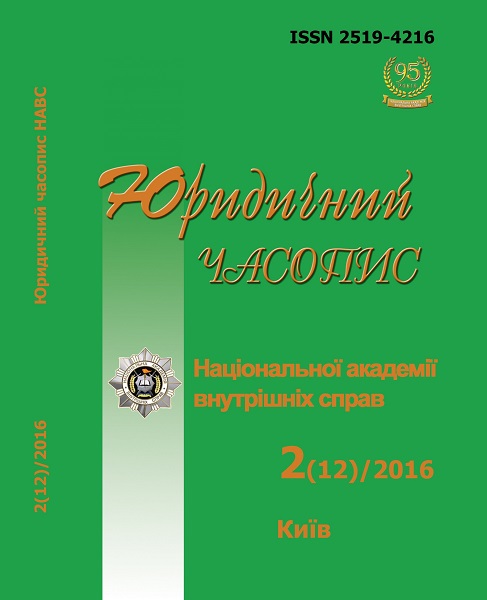Features of the Proceedings Examination Review and Investigation of use for Minor Child Begging
Keywords:
examination, search, begging, child, nonverbal investigative (detective) action, criminal proceedings, investigator, prosecutor, evidence, pre-trial investigation
Abstract
Deals with a general procedural requirements for proceedings examination and review and tactical implementation of these features nonverbally investigative (detective) actions during the investigation of the use of a minor child for begging. Examination suspect often regard the presence of his distinguishing marks (scars, tattoos, absence of certain parts of the body), which indicate witnesses. We found that in the considered a criminal offense, apparently because of its specificity, the investigator is necessary osviduvaty suspect in terms of his lack of certain body parts (hands, feet), which is often only apparent for surveillance around. Obviously these suspects, misleading people where they beg for money, wealth, etc., using small child, hoping to touch more people and passers mimic lack in their hands or feet. Fully spent investigators review the scene in the commission of the criminal offense the use of a minor child for begging, allow the investigator to form a reasonable assumption persons and the number who used a minor to engage in begging, the degree of family relationship of the victim and the suspect, the fact of violence, the presence of previous conspiracy or organized group of people more.Downloads
Download data is not yet available.
Abstract views: 91 PDF Downloads: 74
How to Cite
[1]
Basysta, I., Rozkoshynska, S. and Maksymiv, L. 1. Features of the Proceedings Examination Review and Investigation of use for Minor Child Begging. Law Magazine of the National Academy of Internal Affairs. 12, 2 (1), 20-28.
Issue
Section
Law enforcement activities
Copyright (c) 2017 Law Magazine of the National Academy of Internal Affairs

This work is licensed under a Creative Commons Attribution-NonCommercial-NoDerivatives 4.0 International License.
- Authors reserve the right to authorship of their own work and transfer to the magazine the right of the first publication of this work under the terms of the Creative Commons Attribution License, which allows other persons to freely distribute published work with mandatory reference to authors of the original work and the first publication of an article in this magazine.
- Authors have the right to enter into separate additional agreements on non-exclusive dissemination of the work in the form in which it was published in the journal (for example, to post an article in the institution's repository or to publish as part of a monograph), provided that the link to the first publication of the work in this journal is maintained.
- The journal's policy allows and encourages the posting of articles by authors on the Internet (for example, in electronic storehouses of institutions or on personal websites), both before the submission of this manuscript to the editorial office and during its editorial processing, as this contributes to the creation of a productive scientific discussion and positively affects the efficiency and dynamics of citing the published work.




